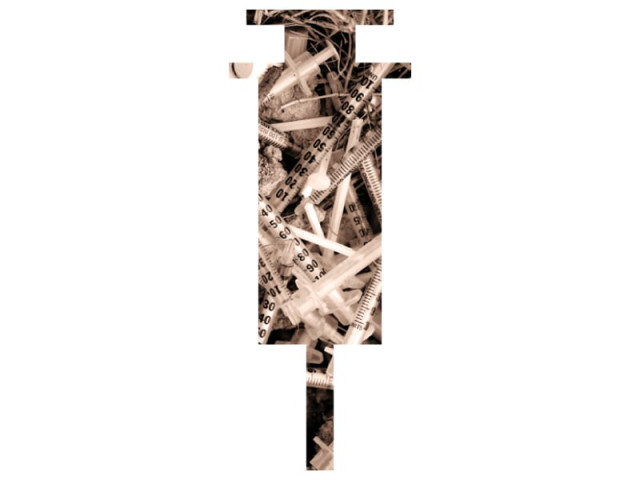
Ten-year-old Sadiq Khan drags himself out of bed at the crack of dawn so he can beat the crowd of scavenger children at the east gate of Lady Reading Hospital (LRH) and collect hospital waste from a dump.
Once he collects enough disposable syringes and other used plastics, Sadiq heads to Shoba Bazaar where he then sells these hazardous items. Sadiq is one of hundreds of children who deal with hospital waste for a pittance.

All three tertiary hospitals in the city do have incinerators for hospital waste. However, the ever-growing number of small private health facilities do not possess the capacity, or the knowledge, to safely dispose any of their waste and dump it as ‘municipal waste’.
At times, the waste is left inside roadside collection garbage containers, though on many an occasion, it is just left in a pile or buried without any consideration to groundwater or other health hazards.
Even with incineration facilities, the profitability of selling the waste plays a significant role in skipping the official guidelines which exist in black and white. Under the Pakistan Environmental Protection Act of 1997, Hospital Waste Management Rules, 2005 provide clear guidelines on how to collect, separate and dispose hospital waste.

Categorising hazards
The rules define the word hospital as anything like a clinic or dispensary or blood bank to a mortuary or veterinary hospital. “All disposable medical equipment and supplies including syringes, needles, plastic bottles, drips and infusion bags shall be cut or broken and rendered non-reusable at the point of use.”
The rules categorise the various forms of waste generated by hospitals into non-risk waste which includes paper, cardboard, packaging, food waste, etc and risk waste which is the umbrella term for infectious, genotoxic, pathological, pharmaceutical, chemical and radioactive waste.
Waste contaminated by pathogens such as bacteria, viruses or parasites during surgeries and autopsies of infected patients or equipment contaminated by coming into contact with such patients is called infectious waste, while genotoxic waste is defined as outdated cytotoxic drugs (generally used to treat cancer), human waste of patients treated with cytotoxic drugs as well as equipment used to prepare and administer these drugs.
Similarly, organs, blood, bodily fluids, aborted foetuses and body parts are categorised as pathological waste, while chemicals from diagnostic and experimental work, housekeeping and disinfecting procedures, mercury waste from broken clinical equipment and cadmium waste from discarded batteries are termed chemical waste. And as the name suggests, radioactive waste refers to waste generated from the use of radioactive material for diagnostic and therapeutic purposes.

Collective waste
According to data collected by the Khyber-Pakhtunkhwa Environmental Protection Agency (EPA), 15 to 20 tons of hospital waste is generated daily in the provincial capital alone. Of this, 65% is organic waste which is compostable and 35% is non-compostable or inorganic.
Moreover, dental hospitals also contribute to medical waste in the form of amalgam, a type of alloy of mercury and other metals used in filling cavities. Around 3 .2kg of amalgam waste is generated every year by three dental hospitals of Peshawar.
According to a 2013 research of the Sustainable Development Policy Institute, a dental amalgam contains 50% mercury, 30% silver and 20% other metals such as copper, zinc and tin. When released into the environment, amalgam waste can pollute water bodies, soil and air and lead to a range of health complications.
Effective disposal
Under the Hospital Waste Management Rules 2005, the responsibility for waste management lies solely with those who generate it. The rules entail that the medical facility draw up a waste management plan to establish points of waste collection, decide frequency of collections and storage facilities.
According to the rules, all risk waste should be incinerated within 24 hours of collection, the residue from the incineration should be sent to the designated landfill site, while all liquid infectious waste should be discharged into the sewerage system after proper treatment and disinfection. Radioactive waste must be disposed of after it has decayed to its required background level.
An EPA official told The Express Tribune the authority has sent a written notice to the health directorate asking it to properly dispose medical waste. However, the rules of hospital waste management continue to be flouted across the city.
Published in The Express Tribune, October 26th, 2014.












COMMENTS
Comments are moderated and generally will be posted if they are on-topic and not abusive.
For more information, please see our Comments FAQ